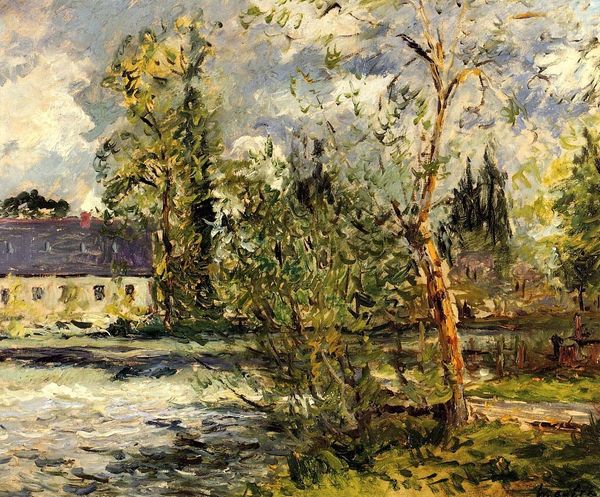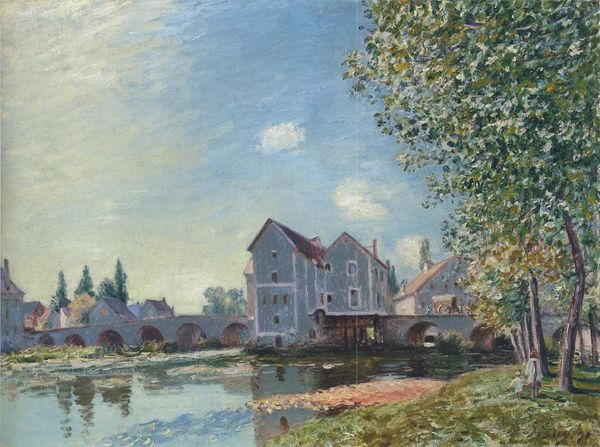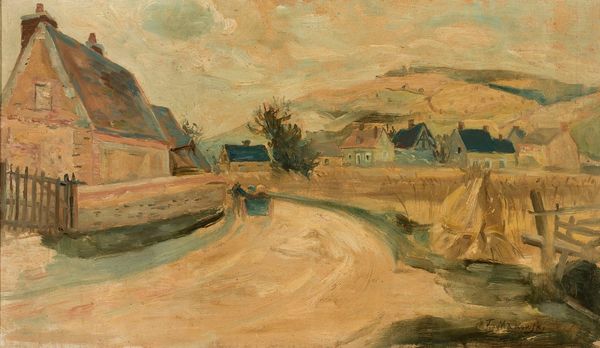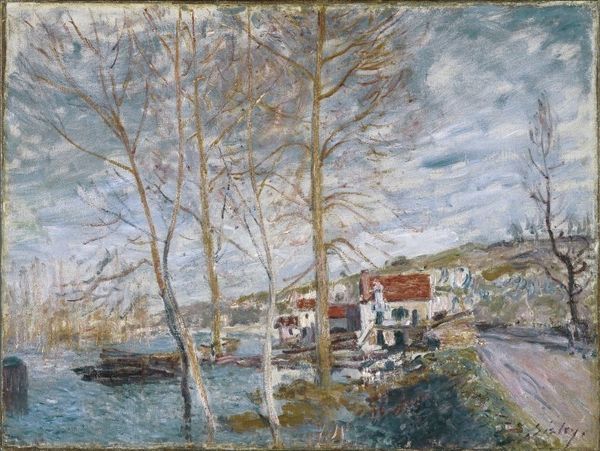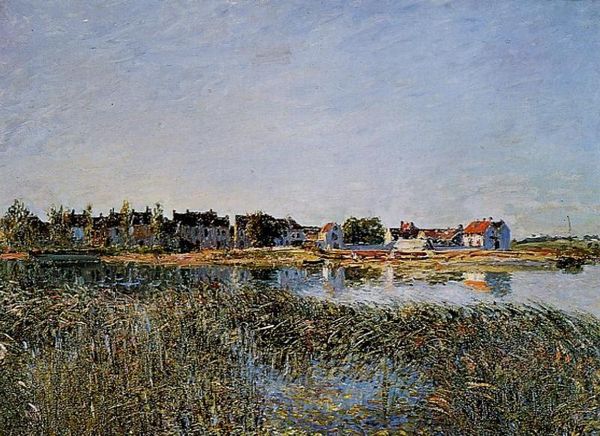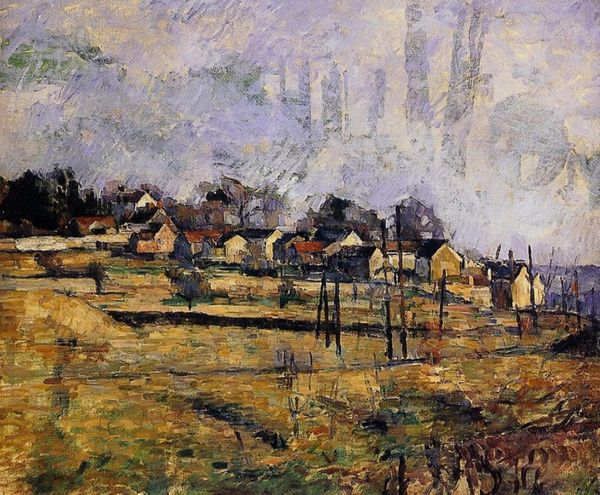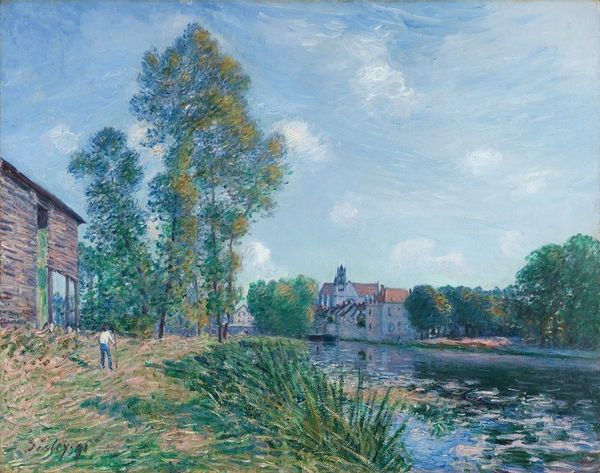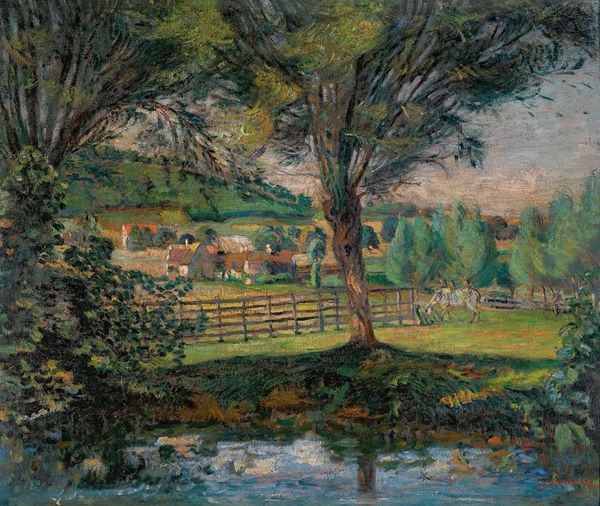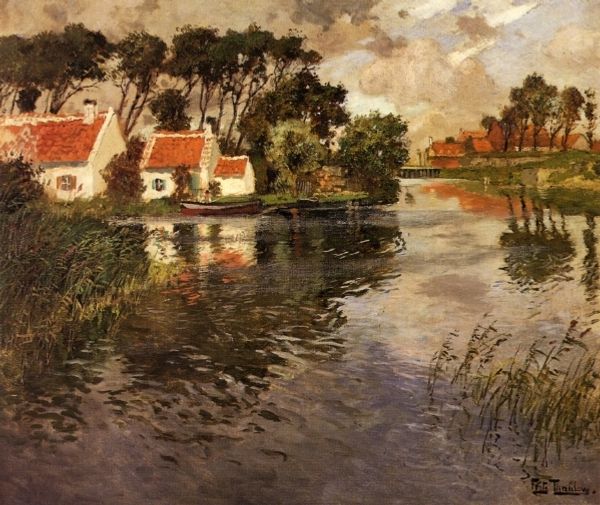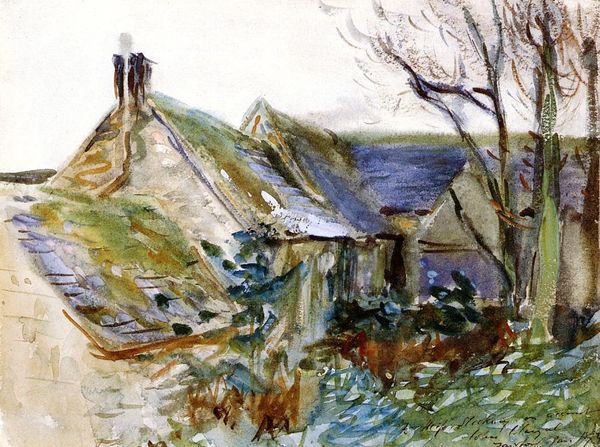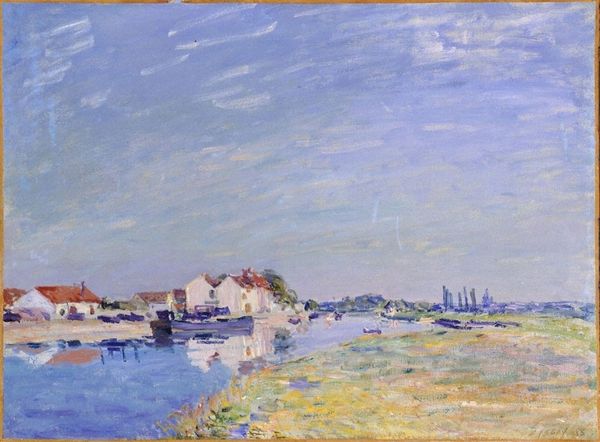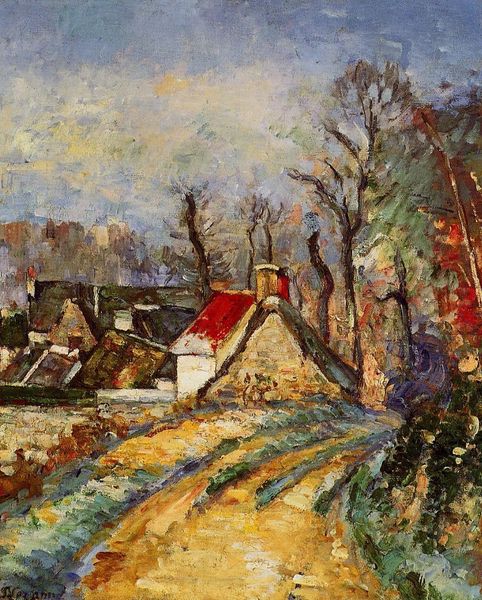
#
abstract painting
#
impressionist painting style
#
impressionist landscape
#
possibly oil pastel
#
oil painting
#
fluid art
#
acrylic on canvas
#
seascape
#
painting painterly
#
watercolor
Copyright: Public domain
Editor: Here we have Paul Cézanne’s "In the Oise Valley," painted around 1874. It’s a beautiful, fairly muted landscape scene. I’m immediately struck by how the reflections in the water create a sort of doubling effect. What stands out to you most when you look at this piece? Curator: Well, placed within the historical context, this doubling effect you noted becomes especially intriguing. This period marks a crucial point in French history; the reconstruction following the Franco-Prussian War and the Paris Commune was underway, deeply impacting the psyche and cultural expression. Cézanne paints during this time, which experienced tremendous changes in industrialization. Editor: How does that relate to the landscape he's chosen here? Curator: The Oise Valley itself offers a landscape marked by both rural charm and encroaching industrial development. Cézanne captures this liminal space, a landscape caught between tradition and modernity. The reflections can be interpreted as mirroring not just the physical scene, but also the societal anxieties and dualities of the era. Editor: That's a very insightful point. I hadn’t thought about it in terms of social reflection! Curator: Think about the implications – where do we stand regarding industrialisation today? And how do artists of our own era portray similar cultural moments? This can influence our present relationship with Cézanne's impressionist vision. Editor: It does recontextualize the entire piece. I find I appreciate how a landscape, at first glance just pretty, could actually have so much to say about the state of things! Curator: Absolutely. Art is rarely created in a vacuum. It’s always engaged in a dialogue with its time, shaping our perceptions of ourselves and the world around us.
Comments
No comments
Be the first to comment and join the conversation on the ultimate creative platform.
